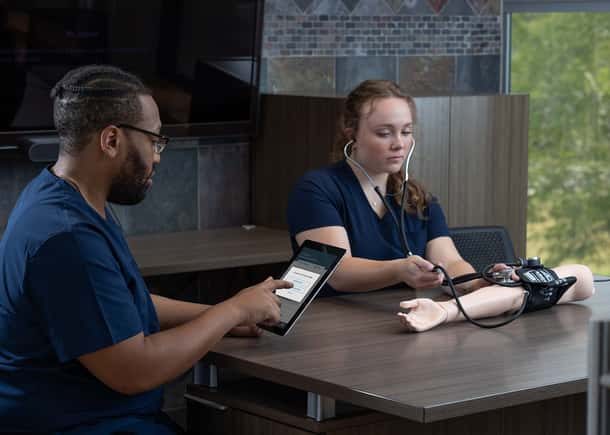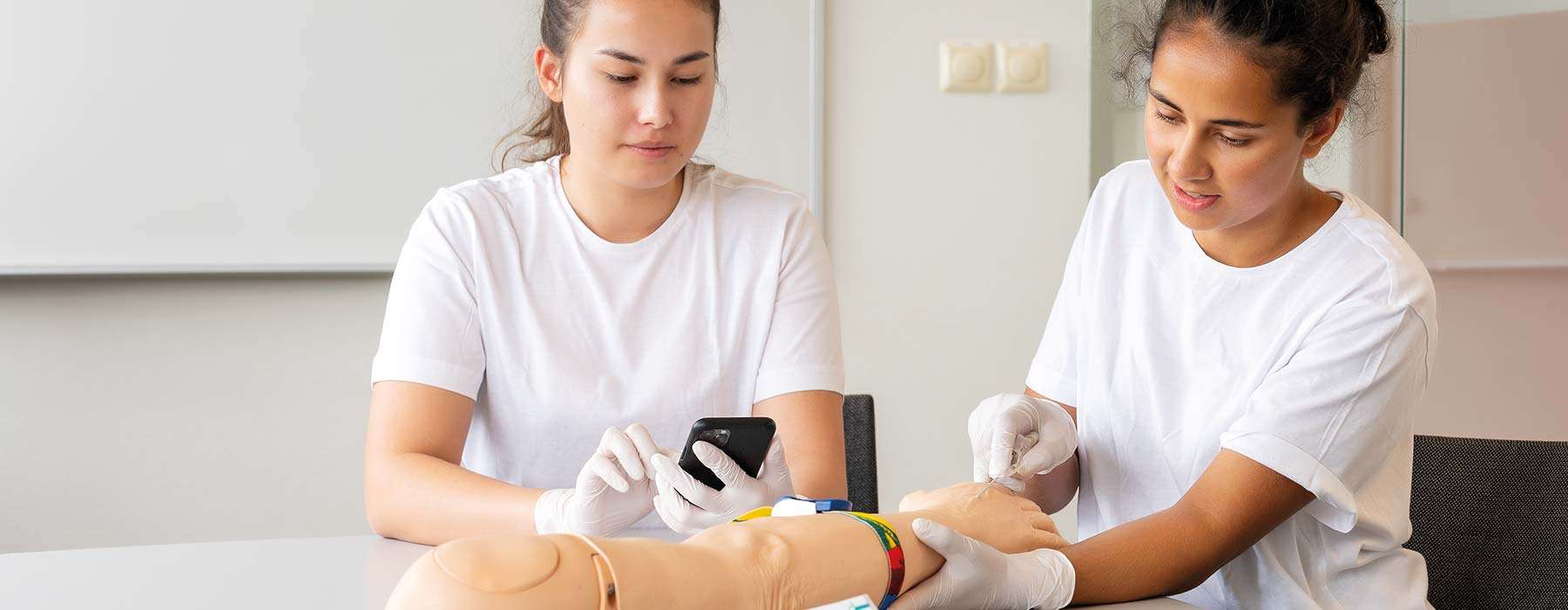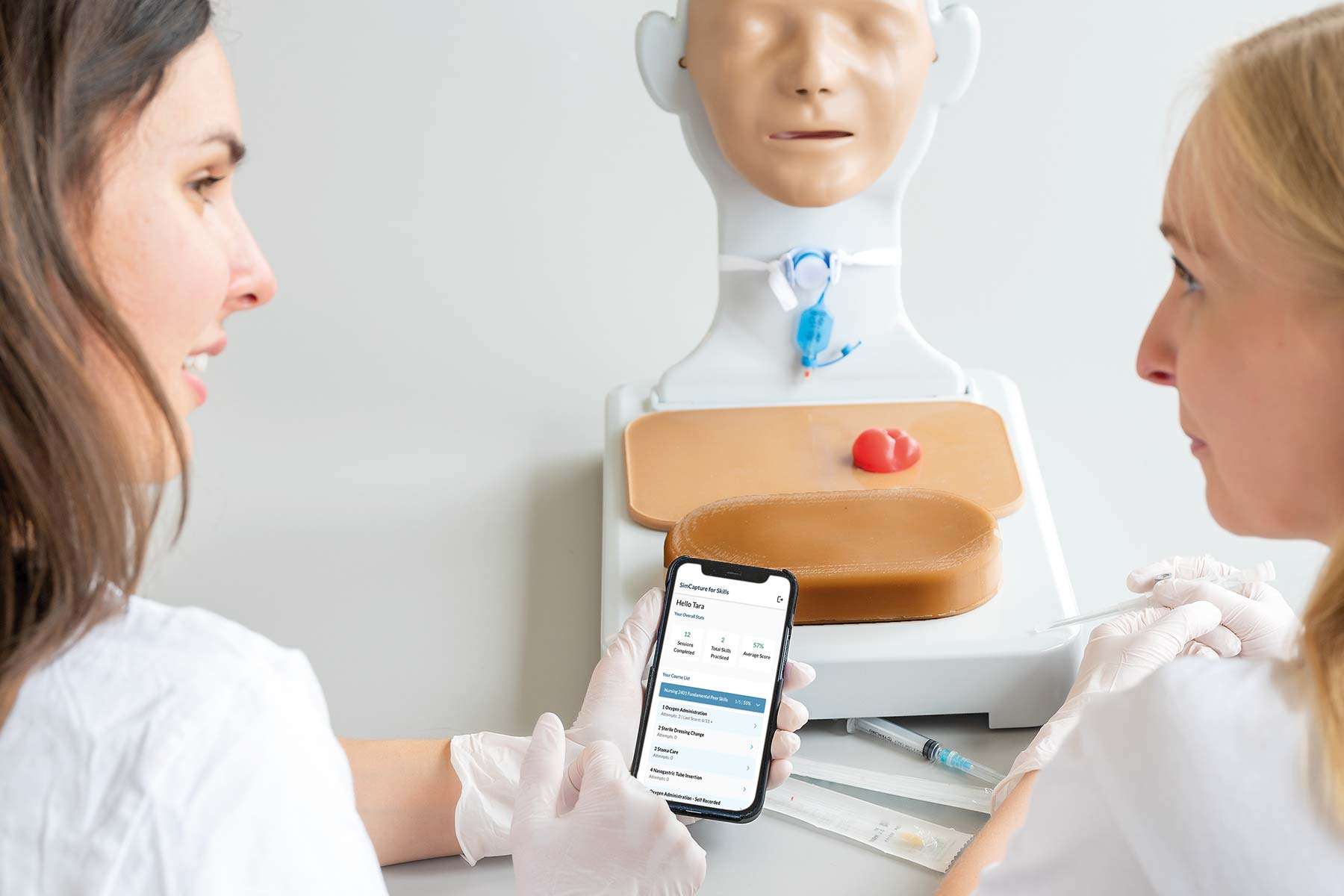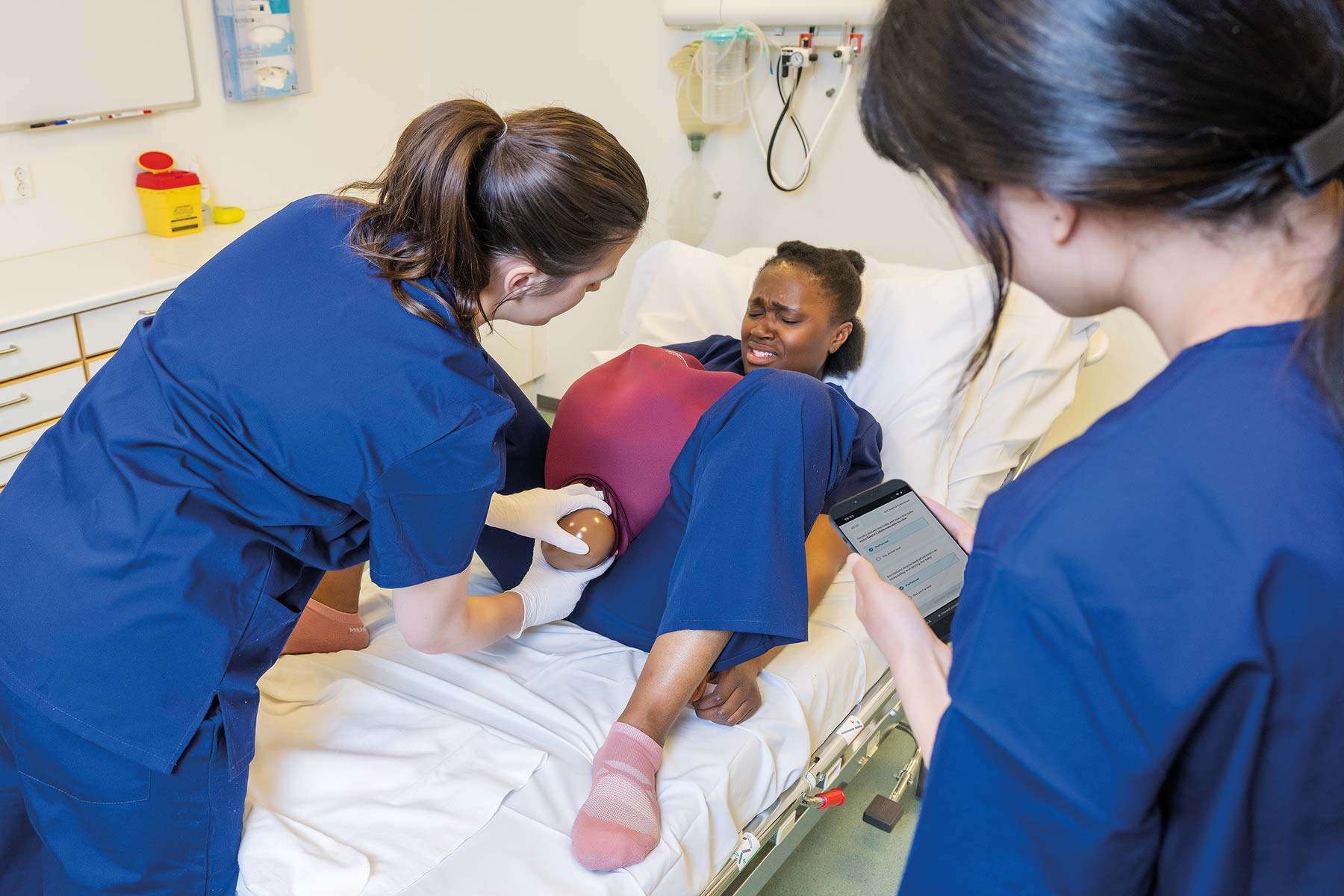Use Peer-to-Peer and Self-Directed Learning to Instill Nursing Skills
Beyond faculty ratios

Beyond faculty ratios

Globally, nurse educators are overextended, and faculty-to-learner ratios are often cited as a cause. Peer-to-peer and self-directed learning is an instructional approach that can help. Used with the right digital tools, peer-to-peer and self-directed learning can make you feel enabled again and help you deliver the competency-based outcomes you are striving for.
The American Association of Colleges of Nursing (AACN) recommends that the ratio of faculty-to-learners for clinical settings be from 1:8 to 1:10. They cite that some nursing schools in the U.S. are now facing ratios as extreme as 1:20.
The British Royal College of Nursing (RCN), the Nursing and Midwifery Board of Australia (NMBA), and the Canadian Association of Schools of Nursing (CASN), have highlighted similar concerns for their own countries. Even the World Health Organization (WHO) has expressed worry, citing how healthcare improvement is being held back by overwhelming class sizes in regions like Africa.
High faculty-to-learner ratios make it difficult for you to achieve two fundamental goals—to provide learners with personalized attention and to maintain educational quality. Learner outcomes suffer. But so do you. High faculty-to-learner ratios mean that you are likely taking on additional teaching loads, participating in more committees, and extending yourself into roles related to program accreditation, curriculum development, and regulatory compliance.
A lot has already been said about the gains educators can achieve by using peer-to-peer and self-directed learning. Eighty years ago, and even earlier, nurse educators trained their learners to administer injections by providing learners with oranges to inject. Learners were given an explanation and demonstration of how to administer an injection and were then assigned to practice independently on the orange and with their peers. Tens of thousands of nurses were trained this way. And the process worked.
Peer-to-peer and self-directed learning strategies in nursing education have several key benefits. The ones our customers tell us about most all related to building a foundation for developing competency.

First and foremost, peer-to-peer and self-directed learning encourages students to engage in discussions, debate different perspectives, and critically evaluate each other’s performance and approach. This process helps develop a basis for critical thinking and clinical judgment skills, which are essential for nursing practice.
Peer-to-peer and self-directed learning also promote student engagement and “active” learning. Learners find themselves at the center of their educational experience, making them owners of the material at hand rather than passive recipients. This engagement fosters deeper learning and retention of knowledge.
Lastly, peer-to-peer learning encourages self-reflection. A common theme in nursing is maintaining situational awareness, especially in emergency care. Part of situational awareness, though, is self-awareness which comes through reflective practice. Reflective practice is vital in nursing for continuous improvement and better patient care.
There are other benefits to using peer-to-peer and self-directed learning. They include developing lifelong learning skills, fostering communication and collaboration abilities, and instilling a sense of responsibility and autonomy. All of these and the above are important to laying the foundation for future competency.
If you are reading this as a nurse educator or as someone at the Director or Dean in nursing education, you know too well the frustrations that come from high learner-to-faculty ratios—and you deserve relief. Peer-to-peer and self-directed learning can help turn circumstances around. This is what our customers have told us.
You will likely have more fun. Yes, we said it, fun. While your learners are practicing individually and with each other, you will be reserving your time for when you bring everyone back together. And when you do, you will likely enjoy a more collaborative and interactive classroom environment. You will likely have deeper discussions, more dynamic dialogues, and feel relieved of the burden of transferring knowledge purely through lecture.

Your workload will likely decrease, too. Peer-to-peer and self-directed learning will permit you to focus on guiding and mentoring learners rather than on often unnecessarily extended instructional time. The time that you can free up can allow you to concentrate more on student advisement, curriculum development, and even research.
Best of all, you can find yourself expanding your own talents. We have observed how educators who use peer-to-peer and self-directed learning have built stronger faculty-learner relationships, have refined their facilitator skills, and experimented more with different techniques like “flipped classrooms”, problem-based learning, and virtual learning.
All in all, peer-to-peer and self-directed learning generally leads to richer faculty experiences and can be more professionally rewarding as you get to experience the growth and development of your learners.
For any psychomotor activity, a skill trainer is a must. A lot has changed since the days when Nurse Educators were using oranges as skills trainers. Today advanced skills trainers are available for most skills development needs. They cover disciplines ranging from nursing to midwifery to emergency care and more.
Peer-to-peer and self-directed learning emphasizes repetition and mastery. Using the right skills trainer, faculty can encourage learners to practice procedures and protocol repeatedly until each learner has achieved competency.
Skills trainers also contribute to a safe and collaborative learning environment. Skills trainers provide a safe space for learners to make mistakes and learn from through self-reflection and peer feedback. And, working with peers, learners experience a shared development model that can stay with them throughout their career.
Chosen correctly, skills trainers can ensure that all students receive consistent training, which is crucial for developing standardized skills across a cohort.

Laerdal’s most popular skills trainer in nursing education is our Modular Skills Trainer. It allows learners to build competence in sixteen different clinical skills and affords them the chance to practice individually or in groups to achieve skills mastery.

Another of our popular skills trainers is our MamaBirthie perinatal skills trainer. It allows midwives, pre-hospital professionals, and anyone entering the perinatal field to gain competency and confidence in vaginal and operative births.
Laerdal offers an entire line of skills trainers chosen to support peer-to-peer and self-directed learning.
For you to get every benefit from peer-to-peer and self-directed learning—for your learners and for you—scalability is key. Laerdal’s SimCapture system can operationalize it all for you.
SimCapture is a digitally based solution that permits you to integrate, automate, manage, and monitor simulation-based learning and training. It is as ideal for peer-to-peer and self-directed learning, and you can use it for high-fidelity simulation as well.
SimCapture takes over the work—and even some of the thinking—that you would otherwise need to do manually. And it does this on a mass scale.

At its most basic level, SimCapture allows learners to combine checklists with educational resources to turn skills practice into actionable insights. Using any web-enabled device like a smartphone or tablet, SimCapture can deliver instructions, checklists, and pre-recorded demonstrations to learners for their use in preparing for skills practice. Learners can then record themselves as they complete skills training assignments, or practice with a peer, using the digital checklists. Once done, the interface provides learners with immediate scoring, personalized feedback, and points for improvement.
The benefits to you are that you can provide digitally and virtually what you would otherwise need to provide manually and in person—assignments, instructions, checklists, and even video demonstrations. Once your learners have completed their assignments, you get back easy-to-read reports that provide insights on your learners’ performance as individuals and as a group. Your work with your students then becomes richer and more meaningful without you ever having to lift a pen or create a spreadsheet. SimCapture does the work for you.
Add to this, you will gain a new level of data-driven objectivity. SimCapture ensures consistency from cohort to cohort and across faculty. You set the parameters. SimCapture does the rest.
Using SimCapture, you will be more efficient, more effective, and enabled to be more proactive.
- Rosemary Samia, MSN, RN, CNS, CHSE
Director, Center for Clinical Education & Research, University of Massachusetts Boston

Even in institutions that enjoy optimal faculty-to-learner ratios, there is a vigilance about how to best prioritize faculty skills, time, and efforts to create the most significant learner growth. We can help!
Our experience is that when our customers combine peer-to-peer and self-directed learning with the right skills trainers and SimCapture as the digital “hub” for it all, learners perform better, and faculty have a much more enjoyable and rewarding teaching experience.
If faculty-to-learner ratios are standing in your way or you are experiencing any other obstacles to imparting skills competency to your learners, let us introduce SimCapture to you and put in place the other elements that can make peer-to-peer and self-directed learning an educational multiplier for you. Call your local Laerdal representative or take advantage of the resources listed below.
Helping you teach more efficiently to lay the foundations for competency is part of our mission. Thank you for the opportunity to support you.